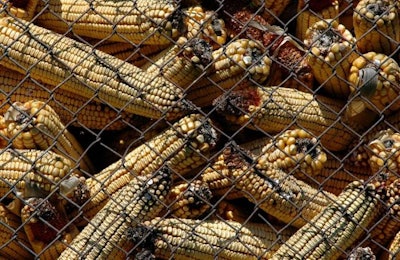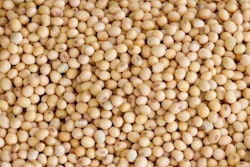
If you are active in a market where conditions are hot and humid, then you have heard of moldy feed. Whether it turns blue, green or a rainbow of colors, you have seen it, and you know animals do not react gracefully to such a meal. It's not as bad as toxins in the feed, but mold will eventually produce toxins, given enough time. So it is best to prevent feed from getting moldy instead of trying to remedy an already-lost cause.
The best preventive measure against moldy feed is, of course, to minimize the presence of the element required by mold to grow: water. Moisture in feed can be reduced by proper or extra drying of the ingredients used or of the final mixed feed. If these ingredients or feeds are produced locally, then extra drying is going to be costly and mostly ineffective, as the moisture will return unless it is sealed (highly unlikely). Heat is also required for mold to grow, but keeping feed cool is rather unrealistic for farming purposes.
Thus, most feed manufacturers rely on feed additives that can control, or rather delay if we want to be more accurate, mold growth. Now, which additives to use is the main point of discussion among nutritionists during summer months, but most will start from propionic acid — the universal mold growth inhibitor. The exact level is better left to the practicing nutritionist so that neither cost nor feed acceptance are affected by inaccurate dosages that need to be tailored according to feed composition and actual farm conditions in regards to storage conditions and duration, and, of course, the prevailing temperature and humidity conditions.

















